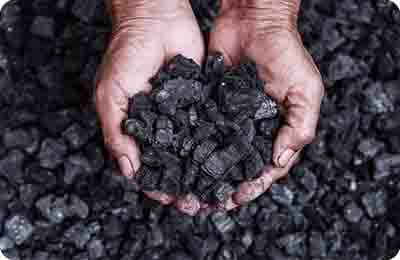含钒石煤矿高效清洁提取五氧化二钒
时间:2022-10-07 03:30:07

摘 要:本研究采用XRD、SEM、BES、TG-DTG等检测手段,对多个地区(四川、贵州、甘肃、湖南)的含钒石煤进行了矿物学研究。研究表明,石煤中的主要矿物为石英、云母、粘土;各地石煤矿的化学成分、钒赋存状态、不同价态钒的分布差异较大,但钒主要赋存于铝硅酸盐矿物中。采用常压强化浸出工艺,对多个地区石煤进行了提取钒的工艺技术研究。结果表明,湖南、贵州、四川、甘肃等地石煤矿中钒浸出率可达80%、82%、62%、55%以上,含氟离子助浸剂的加入有利于含钒矿物的强化离解;钒浸出率与碳质成分的含量及二氧化硅含量有关。废酸回收率达到83%以上,钒离子和铁离子截留率分别达到93-95%和92-94%;钒萃取率和反萃率分别达60%和70%以上。酸浸渣用于制备建筑用陶粒和砖,产品达到优等品的等级要求。开展了日处理100kg含钒石煤矿连续浸出―连续萃取/反萃―精钒制备扩大实验,钒浸出率可达82-83%,重现了小试结果;8级逆流萃取/反萃后,钒回收率达96.3%;产品五氧化二钒纯度为99.01%;全流程钒直收率达80%以上。研究了U,Th,Ra,K等四种放射性核素在全流程的走向及分布。结果表明,石煤中93.06%的U进入溶液。而经过萃取反萃后,98%左右的U在贫有机相中富集;而75-77%的Th,Ra,K三种放射性核素在浸出过程中滞留于渣相中,在后续萃取/反萃过程中的分布与U是一致的。常压强化浸出―萃取工艺为实现石煤资源的高效清洁利用提供了一条可行的技术路线。
关键词:石煤; 钒; 强化浸出; 萃取; 放射性核素
A clean and high effective technology of vanadium pentoxide extraction from vanadium-bearing stone coal
Abstract:The present project is a continuation of the previous study of “Extraction of vanadium from stone coal under pressure field and comprehensive utilization of resources”. On the base of the previous research, an intensified leaching-solvent extraction-precipitation-calcination process was proposed. XRD, SEM, BES and TG-DTG were used to analysis the mineralogical of the vanadium-bearing stone coal from the different regions. The research showed that quartz, mica and clay is the three major minerals, though the chemical component, vanadium deposit, and the distribution of difference valance vanadium are quite different between the stone coal from different areas, vanadium mainly occurs in aluminosilicate minerals. The intensified leaching technology was employed to extracting vanadium from the vanadium-bearing stone coal from different regions. The results showed that, the vanadium leaching ratio were 80%, 82%, 62% and 55% for the stone coal from Hunan, Guizhou, Sichuan and Gansu provinces, respectively. The fluoride aid-leaching reagent can improve the leaching rate of vanadium. Vanadium leaching ratio is related to the carbon and silica contents in the mineral. More than 83% sulfuric acid could be recovered from the leaching solution, and the vanadium and iron rejection were within 93-95% and 92-94%, respectively. In the solvent extraction and stripping process, vanadium single extraction and striping ration were more than 60% and 70%, respectively. The leaching residue was used to preparation of building brick and ceramic, the quality of these products achieved through quality standards. Continuous expanding experiments of 100 kg/d stone coal every day was carried out. The vanadium leaching ratio was 82-83%, and vanadium extraction was 96.3% with 8 stages solvent extraction and stripping as well as the purity of V2O5 product was 99.01%. Vanadium recovery in all processes is more than 80%. The direction and distribution of the radioactive nuclide of U, Th, Ra and K were studied also. The results showed that 93.06% of uranium dissolved in solution and 98% of uranium was enrichment in the organic phase. While 75-77% of Th, Ra, and K retain in the residue, and their behavior in solvent extraction-stripping process was as same as uranium. The atmospheric intensified leaching-solvent extraction process provides a feasible technology route for recovery vanadium from stone coal.
Key words:stone coal; vanadium; intensified leaching; solvent extraction; radioactive nuclide
阅读全文链接(需实名注册):http:///xiangxiBG.aspx?id=42103&flag=1
